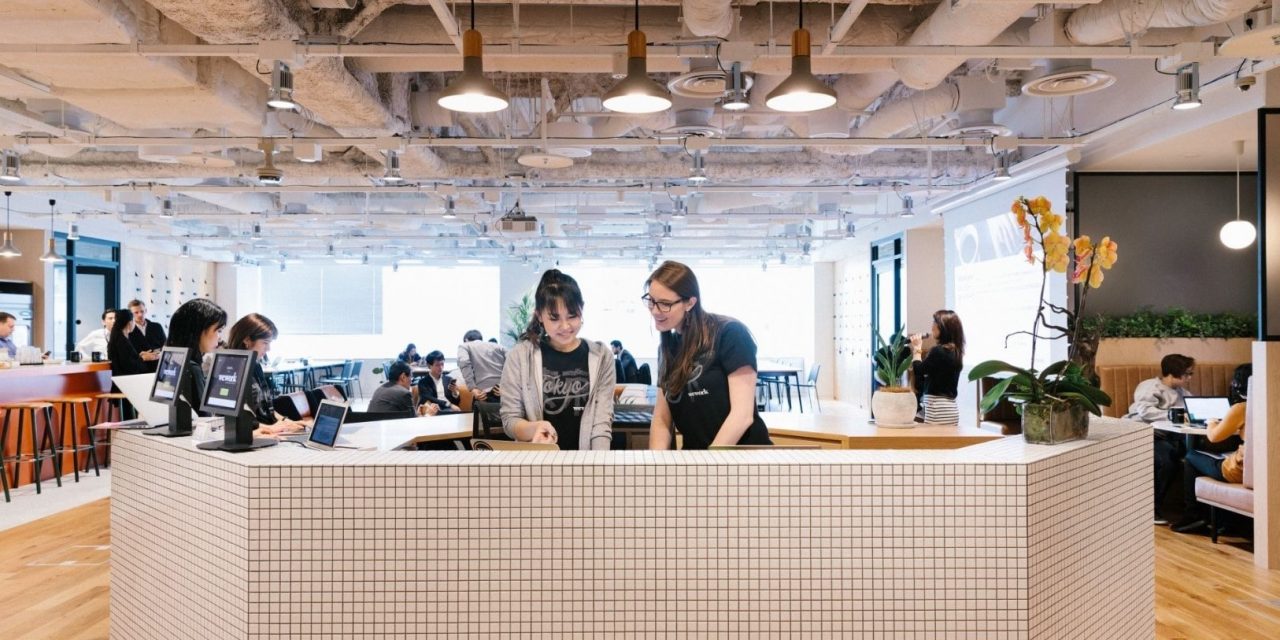Due to the effects of COVID-19, the global market for coworking spaces is expected to fall by 12.9% from $9.27 billion in 2019 to $8.24 billion in 2020.
The growth of the market is limited by the tremendous increase in the number of employees working from home because of the coronavirus lockdown. A recent report reveals that in March 2020, operators of coworking spaces saw a 50% decline in revenue.
With no end in sight for the current global health crisis, does this mean there’s no hope for coworking space operators and developers?
Experts say no. According to some, remote work isn’t going anywhere. Despite the massive hit the industry has taken, there is an upside stemming from the changing attitudes that will make coworking a top option for businesses in the future.

Let’s take a closer look at what we learned in 2020 and what the future holds for coworking.
Health and Safety Will Remain a Priority
As businesses are starting to reopen around the world and people are going back to their workspaces, the reality of coworking spaces going forward will include a priority on the health and safety of the operators and members.
Governments may have lifted lockdowns and restrictions, but it’s still up to individual organizations to figure out ways to reopen their workplaces safely.
As a workspace operator, it’s crucial that you make the necessary changes to ensure the safety and comfort of the people who use your space.
There are certain steps you can take to accomplish this:
1. Use Technology to Eliminate Common Touch Points
If there are any common touchpoints in your workplace, determine which of them can be eliminated through the use of technology. For example, you can use automatic door openers, automatic faucets in the kitchens and bathrooms, smart lighting, and so on.
2. Create a Plan for Physical Distancing
You can work to ensure a virus-safe working environment by implementing the six feet office concept from Cushman and Wakefield, which is designed to increase boundaries and maintain a distance of 6 feet between workers at all times to decrease the risk of contamination.
You can also ensure that physical distancing is respected throughout the whole workspace by including additional steps for the hallways, elevators, and common areas.
3. Improve Your Cleaning Protocols
You will likely need to establish new cleaning protocols in your workspace. Consider new disinfectant technologies, such as ionization, UV light, and nano-tech coatings to help neutralize germs on various contact surfaces.
4. Have a Plan for a Worst-Case Scenario
Make sure you have a protocol in case of someone in your workspace testing positive for the coronavirus.
For instance, if you find yourself faced with such a situation, will you want your core working space to have contact tracing capabilities? Also, what steps will you take to disinfect your entire workspace, and what will your return-to-the-space plan be?
In addition to these steps, you can also keep in mind the following considerations:
- Conduct temperature checks on entrance
- Make face masks mandatory within office space
- Stop providing snacks, free lunches, etc.
- Offer pre-packaged food instead of buffet-style
- Schedule HVAC maintenance for your air filtration system
- Maintain strict policy for sick people and suggest working from home (even if they believe it’s just allergies)
Keep in mind that these steps are simply a starting point designed to guide you in implementing strategies that work for you, your members, and operators.

Photo credit: Fosbury and Sons Harmony, Antwerp
More Enterprises Will Shift to Hub-and-Spoke Model
The virus is taking a toll on the economy, and as it continues to ravage businesses everywhere, it has caused more enterprises to shift to the hub and spoke model in order to improve efficiency.
The hub and spoke model, which originates in the transportation industry, can be adapted to work well in various other industries with some creativity.
Unlike a linear, point-to-point business model, the hub and spoke model involves having a distribution method where a “hub” exists, and everything originates in the hub or gets sent to the hub for distribution to customers.
From the hub, products travel outward to the company’s smaller locations, or “spokes” there to undergo further processing and distribution.
With such a model, businesses can organize and streamline everything so they can operate efficiently and deliver solutions in the most timely and cost-effective way possible.
This business model will become more relevant for coworking spaces because as more enterprises shift to the hub and spoke office model, they will downsize their city center office leases (the hubs) and create smaller, more flexible satellite offices (the spokes) in multiple collaborative spaces across different areas.
The hub would serve as the business’s headquarters, where client meetings and larger team meetings would be held, while the spokes, which can be more versatile, will facilitate collaboration and coworking.
According to Develux, more and more companies are becoming comfortable with a remote workforce. The pandemic has forced businesses to rethink logistical and space needs, and most focus on pairing the preferences of their employees for remote work with flexible coworking spaces that allow them to maintain a connection with their colleagues.
Regional co-working spaces work extremely well because they address all the employees’ concerns pertaining to the cost of travel, commute time, work-life balance, and flexibility, while still giving companies the opportunity to train, motivate, and monitor the productivity of the employees on site.
Private Offices and Enclosed Spaces Will Be a Priority
The global pandemic has already pushed tens of millions of people to work remotely, and a large segment will likely never go back to a “normal” office.
COVID-19 has changed the way office space looks and functions. Where before, people prioritized open space, now private offices and enclosed spaces will be prioritized to help maximize safety during the public health crisis.
Office spaces will be reshaped to capitalize on the safety and comfort of users, and this could mean a swift reversal to the open-style workspace trend.
Over the years, the amount of privacy that is allocated to each employee working in an office has been steadily decreasing. Companies of all stripes have adopted the ubiquitous open-office plan where there is a cool-looking office space with very little separation between colleagues.
Now, businesses will start to divide up larger spaces, which will have the added benefit of giving employees at least a semblance of privacy at work.
This represents a seismic shift in organizational culture.
A lot of coworking spaces will forgo communal spaces and hot desks in favor of more sanitary, albeit less profitable, private areas.
Many of these office design adjustments are simply accelerations of existing real estate trends that had started to gain popularity even before the pandemic. But, because of the COVID-19 crisis, swift and permanent changes are expected, not only in commercial real estate but also in work culture itself.
In other words, the office, as we know it, is gone.

Flexibility Will Reign Supreme
Coworking space enthusiasts have long argued that companies that manage flexible office space will be better able to weather recessions.
The reason behind this is that during such times, co-working companies can expect an influx of new companies looking to downsize their traditional office spaces and move to flexible co-working spaces.
It is for this reason that flexibility will always reign supreme. In addition to businesses that need flexible leases or setups, co-working space operators need to be flexible in terms of prioritizing agility.
Right now, there is a legitimate safety hazard when individuals are working in close quarters to each other. Although this setback doesn’t signal the end of co-working, it does mean that co-working companies, particularly those that are struggling, need to prioritize flexibility in order to put the clients’ minds at rest with regards to the safety of their employees. This can be resolved by using webinar platforms like Zoom.
The bottom line is coworking isn’t doomed, but it is destined to change.
And only those co-working space operators who are willing to adapt to the current needs are going to be able to sustain their businesses going forward.
Even before COVID-19, a lot of companies were already making the shift from long-term leases to more flexible terms offered by co-working spaces, and this is a trend that is likely to grow, perhaps even more rapidly, post-COVID.
Summary
2020 has revealed a lot as to the direction coworking will take in the coming years. Although many coworking companies may be feeling the pressure right now, as is indicated by the headlines of layoffs among most of the major coworking brands, one thing’s for sure, remote work isn’t going anywhere, and you can use the tips outlined in this article to ensure that your coworking space is ready for what comes next.
What do you think the future holds for the coworking industry? Share your opinion in the comments section below.









